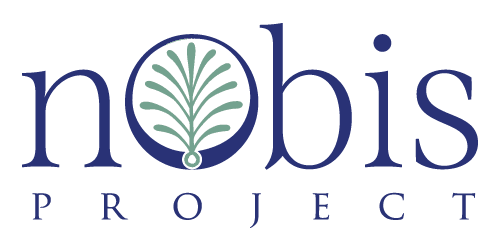By Christen Clougherty
Nobis World teachers at the King-Tisdell Cottage
Nobis Project is based in Savannah, Georgia because that’s where I call home. After college I wanted to live near the ocean, not too far from home (Durham, NC), in a smaller town were I could be engaged in community, and with a strong arts community. Savannah had all these things. My first introduction to Savannah was the movie, “Midnight in the Garden of Good and Evil.” The film captured a magical city untouched by time. And that is what visitors see. My husband calls it, “the theme park called the South” and my four year old now expects all cities to have horse-drawn carriages.
Over the 13 years that I have lived in Savannah I have come to see its many sides. Some are hidden gems off the beaten path, but more are hidden stories of a past that many would rather be forgotten. One such place is on a nearby barrier island in South Carolina, Daufuskie Island. I was interested in visiting the tabby ruins of dwellings where enslaved people once lived on the island. But when I arrived I learned that they were closed off to the public. And by closed off, I mean they are inside a wealthy private gated community. When I told a friend about my unsuccessful trip, she said, “we like to hide our uncomfortable pasts.” And she is right. But that is not the world I want to live in. It is only when we face ourselves and our shared histories that we begin to see our interconnectedness and even our interdependence.
In the Nobis World program, Savannah, Ga & The Lowcountry: Preserving African-American and Gullah-Geechee History, I am (along with many Savannahians) able to share with teachers from all over the country some of these other pasts, other presents, and we pondered over potential futures.
During the five-day program held annually in July, we explore the preservation of African-American history and culture in Savannah and Georgia’s coastal islands. Teachers experience the historic city of Savannah, with its stunning architecture and grand live oaks dripping with Spanish moss, as well as the lovely Lowcountry coastal landscape, with its expansive marshes and refreshing sea breezes. Through a service-learning project and cultural immersion, teachers learn how different museums and heritage organizations preserve the history of African-Americans in the Lowcountry. We learn quickly that there is much more to Savannah than is first apparent.
The program focuses on the themes of race, slavery, and the sense of place. We consider the impact of geography, environment, and diaspora on the development of community values and culture by looking at two different experiences: the urban environment of Savannah and the rural Gullah-Geechee culture on the barrier island Sapelo. The Gullah-Geechee culture is distinctive and found only in the Lowcountry: the Gullah-Geechee people are descended from formerly enslaved people, primarily from the East Coast of Africa.
During this program we work with the King-Tisdell Cottage Foundation in a service-learning project. Exploring together ways to bring the museum into the classroom in meaningful and relevant ways for today’s learners.
We invite teachers to join us in summer 2015. Visit our website for details: www.nobisworld.org
And if you want to read more about the many sides to Savannah, check out the New York Times article that came out this past weekend: “Savannah, Both Sides.”
I wonder what “uncomfortable pasts” are hidden in your town?


0 Comments